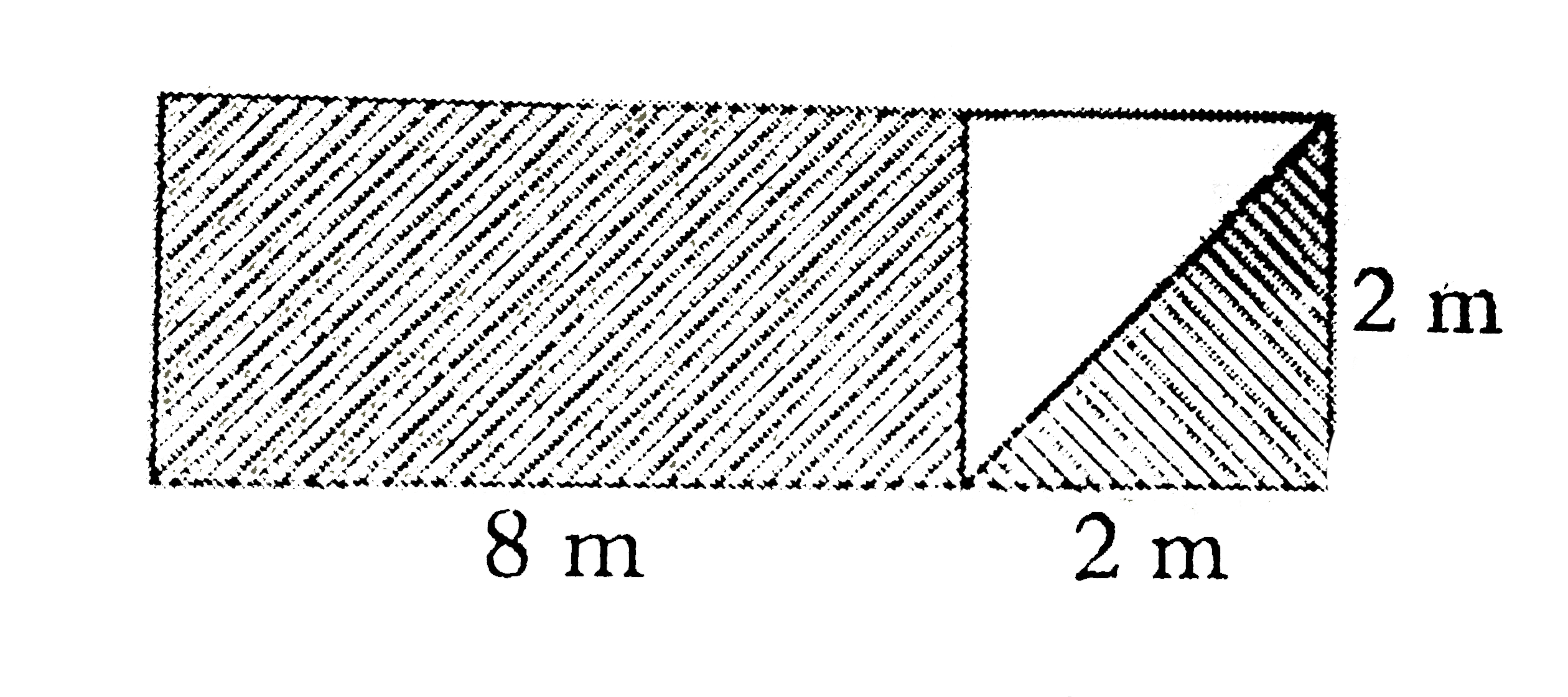https://d10lpgp6xz60nq.cloudfront.net/physics_images/PAT_CHE_0XI_B05_C11_E01_132_Q01.pngSolution in Bengali
The correct Answer is:a→q,s;b→r;c→p,q;d→p
a. Line x−1−2=y+23=z−1 is along the vector →a=−2ˆi+3ˆj−ˆk and line →r=(3ˆi−ˆj+ˆk)+t(ˆi+ˆj+ˆk) is along the vector →b=ˆi+ˆj+ˆk. Here →a⊥→b.
Also ∣∣
∣
∣∣3−1−1−(−2)1−0−23−1111∣∣
∣
∣∣≠0
b. The direction ratios of the line x−y+2z−4=0
=2x+y−3z+5=0 are ∣∣
∣
∣∣ˆiˆjˆk1−1221−3∣∣
∣
∣∣=ˆi+7ˆj+3ˆk.
Hence, the given two lines are parallel.
c. The given lines are (x=t−3,y=−2t+1,z=−3t−2)and→r=(t+1)ˆi+(2t+3)ˆj+(−t−9)ˆk, or
x+31=y−1−2=z+2−3andx−11=y−32=z+9−1.
The lines are perpendicular as
(1)(1)+(−2)(2)+(−3)(−1)=0.
Also ∣∣
∣
∣∣−3−11−3−2−(−9)1−2−312−1∣∣
∣
∣∣=0
Hence, the lines are intersecting.
d. The given lines are →r=(ˆi+3ˆj−ˆk)+t(2ˆi−ˆj−ˆk)and→r=(−ˆi−2ˆj+5ˆk)+s(ˆi−2ˆj+34ˆk).
∣∣
∣
∣∣1−(−1)3−(−2)−1−52−1−11−23/4∣∣
∣
∣∣=0
Hence, the lines are coplanar and intersecting (as the lines are not parallel).
Topper's Solved these Questions
- THREE-DIMENSIONAL GEOMETRY BOOK - CENGAGE PUBLICATIONCHAPTER - THREE-DIMENSIONAL GEOMETRY EXERCISE - INTEGER TYPE
10 Videos
- THREE-DIMENSIONAL GEOMETRY BOOK - CENGAGE PUBLICATIONCHAPTER - THREE-DIMENSIONAL GEOMETRY EXERCISE - ARCHIVES SUBJECTIVE TYPE
5 Videos
- THREE-DIMENSIONAL GEOMETRY BOOK - CENGAGE PUBLICATIONCHAPTER - THREE-DIMENSIONAL GEOMETRY EXERCISE - LINKED COMPREHENSION TYPE
12 Videos
- THREE DIMENSIONAL GEOMETRYBOOK - CENGAGE PUBLICATIONCHAPTER - THREE DIMENSIONAL GEOMETRYEXERCISE - All Questions
291 Videos
- TRIGONOMETRIC EQUATIONSBOOK - CENGAGE PUBLICATIONCHAPTER - TRIGONOMETRIC EQUATIONSEXERCISE - Archives (Numerical value type)
4 Videos
Similar Questions
Find the number of sphere of radius r touching the coordinate axes.
View SolutionFind the equation of the plane passing through the points (2,1,0),(5,0,1) and (4,1,1).
View SolutionGiven four points A(2,1,0),B(1,0,1),C(3,0,1)andD(0,0,2). Point D lies on a line L orthogonal to the plane determined by the points A, B and C.
The equation of the plane ABC is
View SolutionFind the angle between the line whose direction cosines are given by l+m+n=0andl2+m2−n2=0.
View SolutionThe number of all possible values of θ, where 0<θ<π, for which the system of equations (y+z)cos3θ=(xyz)sin3θ,xsin3θ=2cos3θy+2sin3θzand(xyz)sin3θ=(y+2z)cos3θ+ysin3θ have a solution (x0,y0,z0) wiith y0z0≠0 is
View SolutionIdentify the cell organelle 'A' :-
ltimg src="https://d10lpgp6xz60nq.cloudfront.net/physics_images/ALN_BIO_C10_E08_018_Q01.png" width="80%"gt
View SolutionDetermine the point of symmetry of a regular hexagon.
View SolutionMatch the following Column A to Column B

View SolutionMatch the following Column A to Column B

View SolutionMatch the following Column A to Column B

View SolutionFind the area of the figure given below.

View SolutionThe area of the shaded part in the figure given below is ______.

View SolutionThe equation of straight line shown in figure is :
ltimg src="https://d10lpgp6xz60nq.cloudfront.net/physics_images/ALN_PHY_R04_E01_020_Q01.png" width="80%"gt
View SolutionAt x=0, value of (dy)/(dx) is : ltimg src="https://d10lpgp6xz60nq.cloudfront.net/physics_images/ALN_PHY_R04_E01_024_Q01.png" width="80%"gt
View SolutionWrite the vector →F in terms of its component :-
ltimg src="https://d10lpgp6xz60nq.cloudfront.net/physics_images/ALN_PHY_R02_E02_002_Q01.png" width="80%"gt
View SolutionFrom the following figure, the correct observation is :- ltimg src="https://d10lpgp6xz60nq.cloudfront.net/physics_images/ALN_PHY_R03_E08_015_Q01.png" width="80%"gt
View Solution
